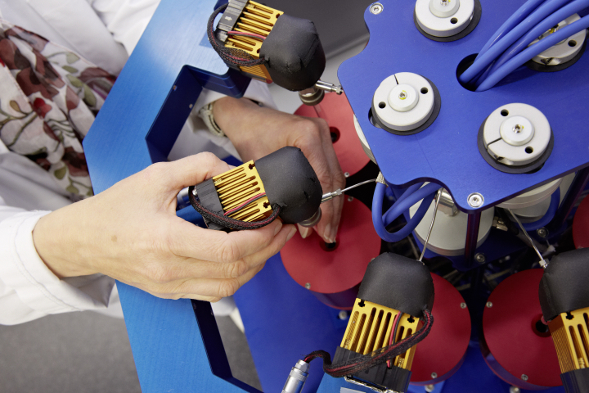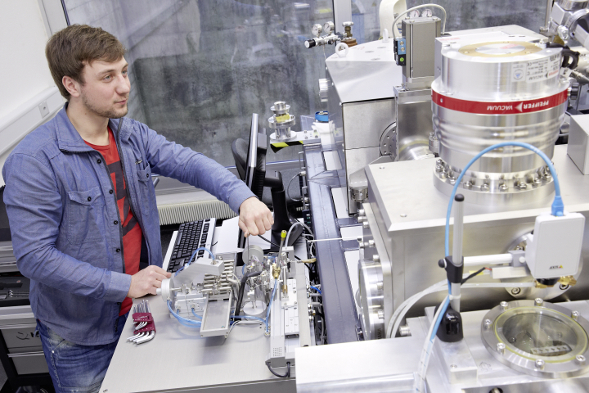Sample preparation
Sample preparation and graphitization

There are two steps in the preparation of samples. First, the fraction most suited to dating is isolated from the sample, and any contamination that could falsify the age is removed. Thus, for example, for the dating of wood, the cellulose is isolated and other constituent parts of wood, such as lignin, are removed. Once this step has been performed, the sample material is converted into a chemical form in which it can be loaded into the AMS in order to measure the 14C content. In most cases, the sample material is first oxidized to CO2 and then converted to graphite. We carry out this two-stage process using automated graphitization equipment, AGE. The graphite thus produced is compressed into target holders and loaded into the ion source of the MICADAS. Micro-samples, on the other hand, are measured in the form of CO2 gas.
Measurement of small samples

14C dating with AMS is usually performed on the basis of just a few milligrams of material so that valuable samples can also be investigated without appreciable loss. Certain applications, such as 14C determination of particulate matter in the atmosphere, however, require sub-milligram samples to be analyzed. For this purpose, the samples must be loaded in the form of gas, which is no problem, thanks to the MICADAS ion source. The CO2 resulting from the oxidization of the sample is mixed with helium in a specially developed gas inlet system and over a period of several minutes is fed continuously into the ion source at a very low flow rate. We are thus in a position to measure samples with a carbon content of <10 µg.
